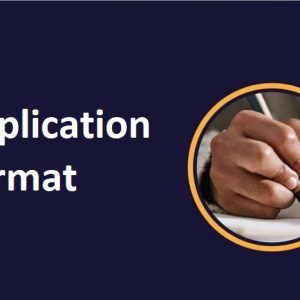Proofreading is your last opportunity of revising your paper before you hand it over to your professor. Using a paraphrasing tool for proofreading your paper, you must set 3 goals in your mind – make it well-organised, make it easy to understand and make it 100% error-free. This step is considered to be a critical process, and it should not be overlooked. Proofreading is not just about looking for errors. It will also help you learn the mistakes that you can avoid making in the future.
If you are new to proofreading, you must be curious about what exactly proofreading involves. Whether you are creating a business report, an essay or a manuscript, as a proofreader, you must do the following:
- You will check all the inconsistent spelling and incorrect capitalisation
- Omits spelling, grammar and punctuation mistakes
- Improves the vocabulary as suited by the type and purpose of the document
- Add minor changes for concision and clarity
- Looks out for extra spaces that may have been left in the paper
Suppose you are concerned about meeting the high expectations of your professor. In that case, proofreading is the stage that will ensure you are submitting a perfectly formatted and written solution and it has got no embarrassing mistakes. The goal of proofreading your paper should be enhancing its quality and ensuring there are no lingering mistakes left in the paper.
Below I am going to share a few proofreading techniques that will come handful to you.
1. Give it a rest
When you are planning to edit your academic task, it is crucial to take a break after you have just finished your assignment writing. Use the time to engage your mind in something else for a little while. This will allow your brain to forget about what you wrote. Doing so will help you see your work from a different perspective when you get back to your work. This will let you spot mistakes easily because, this time, you won’t be remembering what you have previously written but actually follow the paragraph as it flows.
2. Read your work aloud
Reading your paper out loud will help you figure out the sentences that are difficult to understand, so you may make changes. The best way to ensure the sentences are not too long is by ensuring that it gives enough time for readers to stop and breathe in the middle of the sentences. Find out if you have found any words you have stumbled over or sentences that do not sound right. If you feel you need to reread the sentence couple of times to understand. If you are getting stuck there, your readers will also get confused in those steps; thus, it’s always best to rewrite them.
3. Print it out
I found this proofreading technique to be extremely helpful. The text will become easier to read when it comes to a printed page. So choose a cosy corner, take out a red pen, start going through the paper, and highlight wherever you find it necessary.
4. Verify names and titles
Google will be the best fellow for your proofreading journey. Pay closer attention to the product names, titles, people’s names, days and dates. Also, check if the numbering of your content is in proper order.
5. Get a third person for yourself
It is best to get a third person to proofread your paper. When you have a fresh pair of eyes, they can suggest and provide proper recommendations that improve your proofreading efforts and make your paper look more brilliant than before. The extra pair of eyes can be your classmate or family member. You will be surprised by the mistakes that you have overlooked.
6. Look for one mistake at a time
I hope you are not thinking about eliminating all types of errors from your paper in one go. Effective proofreading means reviewing your paper for multiple rounds and ensuring each round is focused on one task. Consider looking at each type of error each time, meaning you cannot check homonyms and spelling mistakes at the same time. This way, you can rule out all types of errors in your paper.
7. Review your paper’s expectations
Make sure the overall presentation for your research paper help is sophisticated. Go through the guideline once again to ensure you have capitalised appropriate words, there are enough spaces between paragraphs, and it follows the guidelines of your professor appropriately.
8. Ensure your paper has a good ‘flow’
Your paper needs to have a proper flow within the content. The readers should be able to follow the logical progression of ideas without any confusion. This means maintaining a paper with transitional words, well-structured sentences, and clearly explained connections between ideas. There should not be any gap or abruptness between the two sentences. Readers should be able to go through a gradual flow as they go from one sentence to another.
9. Do not depend on spelling and grammar checkers
It will be stupid to rely on spelling and grammar checkers. Even though it can be very effective when trying to identify high-level errors, they are often severely limited. They might miss the context and suggest sentences or words that are not quite right for your paper. Suppose you were going to write “two” but instead ended up misspelling the word with “to”. An online grammar checker may suggest you change it to ‘too’, which does not fit right in the context. Thus, even after using the online checker, you must go through the paper to ensure it is grammatically correct and there is no misspelt word.
10. Divide your text into manageable chunks
You can handle more manageable tasks when you divide your text into separate sections. Make sure to read through each section carefully. This proofreading technique will prove effective, especially when handling a large academic project.
This way, you can avoid feeling overwhelmed by your tasks. You will also be able to concentrate effectively on your work.
11. Read your writing backwards
Using this technique will allow you to identify spelling mistakes as it pushes you toward concentrating on each word in isolation. This also helps you identify possible grammatical, spelling, and punctuation mistakes. So start reading from the last word in the text and follow it until you reach the beginning.
12. Check the referencing
Referencing can be very not-picky, so make sure to be careful with it. If you do not want plagiarism police knocking on the door, it is better to keep that in check. Proper referencing is crucial for your academic writing, so follow the right referencing format. When you check references, make sure the citations match the references in your bibliography. Do not forget to look into the little details like date, check if the author’s initials are spaced or unspaced, if numbers are in proper order and if there are any outdated in-text references.
WRAPPING UP
Proofreading can really make a huge difference in your piece. It can elevate our essay writing service to a supreme level. It will lead you to become a better writer. If you do it diligently, then the day is not far when you will not find a single mistake in your academic paper. You will not just remove errors from your paper but also will be polishing your paper till you achieve perfection.





